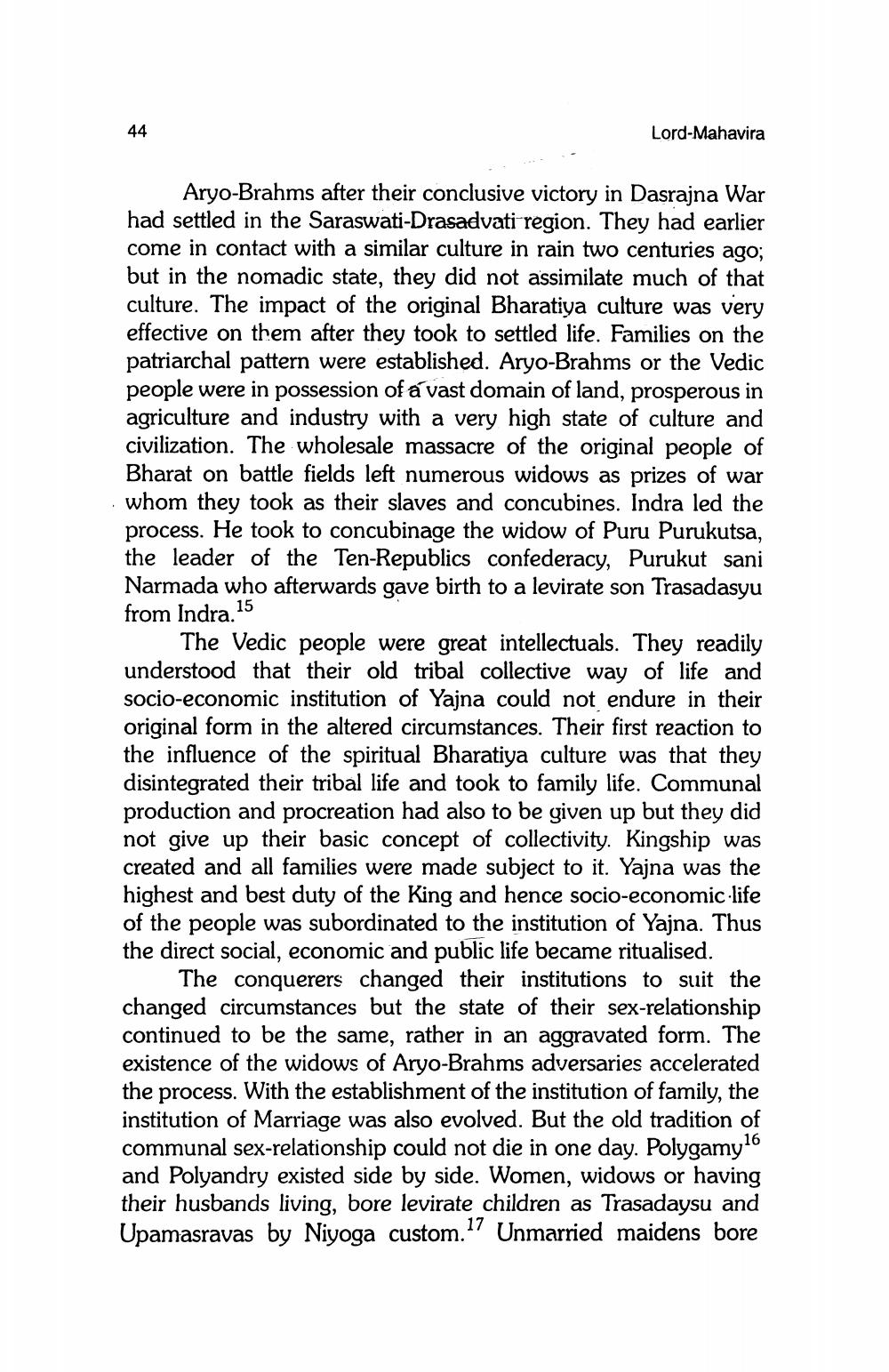________________
44
Lord-Mahavira
Aryo-Brahms after their conclusive victory in Dasrajna War had settled in the Saraswati-Drasadvati region. They had earlier come in contact with a similar culture in rain two centuries ago; but in the nomadic state, they did not assimilate much of that culture. The impact of the original Bharatiya culture was very effective on them after they took to settled life. Families on the patriarchal pattern were established. Aryo-Brahms or the Vedic people were in possession of a vast domain of land, prosperous in agriculture and industry with a very high state of culture and civilization. The wholesale massacre of the original people of Bharat on battle fields left numerous widows as prizes of war whom they took as their slaves and concubines. Indra led the process. He took to concubinage the widow of Puru Purukutsa, the leader of the Ten-Republics confederacy, Purukut sani Narmada who afterwards gave birth to a levirate son Trasadasyu from Indra.15
The Vedic people were great intellectuals. They readily understood that their old tribal collective way of life and socio-economic institution of Yajna could not endure in their original form in the altered circumstances. Their first reaction to the influence of the spiritual Bharatiya culture was that they disintegrated their tribal life and took to family life. Communal production and procreation had also to be given up but they did not give up their basic concept of collectivity. Kingship was created and all families were made subject to it. Yajna was the highest and best duty of the King and hence socio-economic life of the people was subordinated to the institution of Yajna. Thus the direct social, economic and public life became ritualised.
The conquerers changed their institutions to suit the changed circumstances but the state of their sex-relationship continued to be the same, rather in an aggravated form. The existence of the widows of Aryo-Brahms adversaries accelerated the process. With the establishment of the institution of family, the institution of Marriage was also evolved. But the old tradition of communal sex-relationship could not die in one day. Polygamy16 and Polyandry existed side by side. Women, widows or having their husbands living, bore levirate children as Trasadaysu and Upamasravas by Niyoga custom. 17 Unmarried maidens bore




